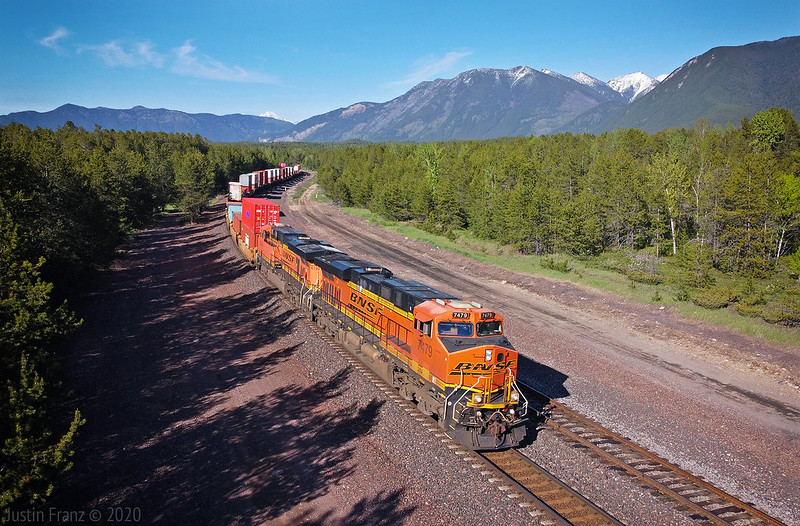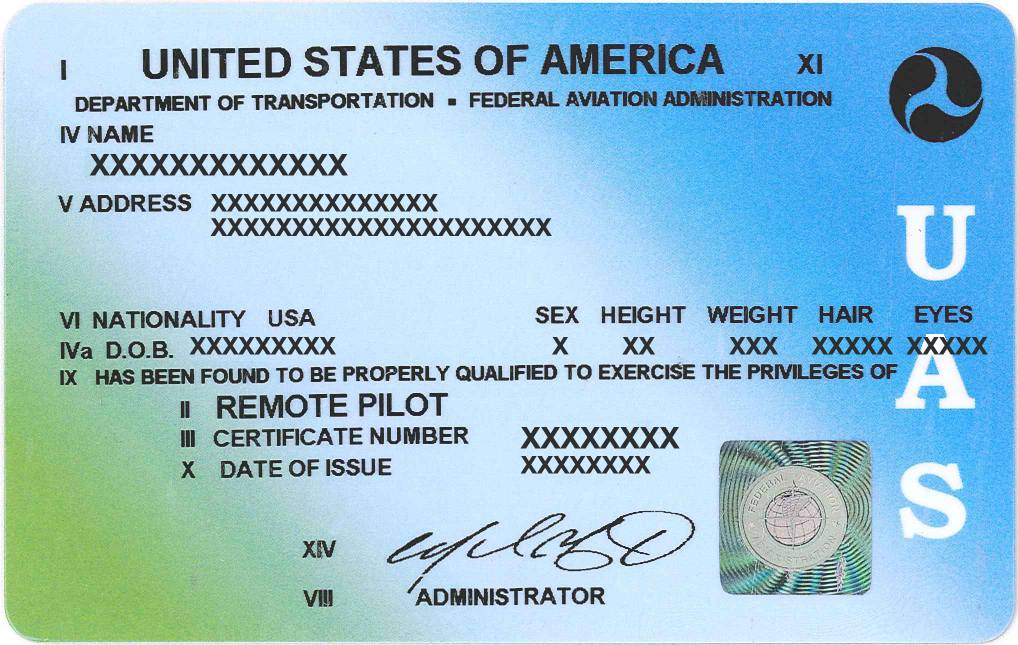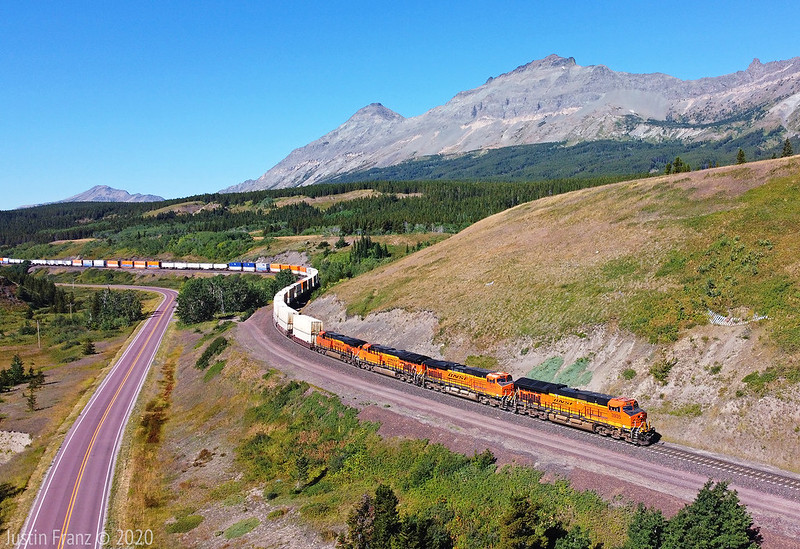By Justin Franz
Any railfan who’s added a drone to their camera bag probably knows the basics to safely fly their bird — don’t go above 400 feet, avoid airports, try not to crash. For a number of years, if you were flying for fun, you did not need to take a test to use your drone in the U.S. In fact, if the bird is under 250 grams (or .55 pounds), you don’t even need to register it with the Federal Aviation Administration.
But as Bob Dylan once said, “The times they are a-changin’.”
In 2018, Congress directed the FAA to create a test for recreational drone pilots to pass before they could legally fly. The test would be considerably less strenuous than the FAA’s remote pilot certificate (perhaps better known as the “Part 107” test, which you need to pass to do commercial work) but would cover some of the basics for recreational pilots. After some input from the drone industry and users, the FAA announced in June 2021 that recreational pilots would be able to take a simple test online for free. Those who correctly answer the questions are issued a completion certificate and will be required to present that document if they are ever asked for it (who might ask for it is unclear). As of this writing in late 2021, the FAA has not announced how it will enforce test-taking or if it will punish pilots who haven’t taken the test. (Because the program is still new, it seems that the FAA will not be enforcing it too hard just yet.) More than anything, it appears the FAA is just interested in making sure people are being safe in the sky, instead of collecting fees. Or at least that’s what it is saying at this time. “We need pilots of all aircraft, including those who operate recreational drones, to have the training and knowledge needed to operate safely in the nation’s airspace,” said Administrator Steve Dickson last summer.
I dipped my toes into the world of drone railroad photography in early 2020. For years, I had derided the flying cameras as a lazy way of gaining elevation (work for your shots!), but faced with a global pandemic that was going to limit travel for some time, I purchased a DJI Mavic Mini in May 2021 to spice up my local railfanning. I picked the Mini for a couple of reasons. One, it was (relatively) inexpensive so if I crashed it during my first flight it wasn’t the complete end of the world. Two, it was light enough that I didn’t have to deal with registering it. And three — and this was perhaps the most important consideration — I could use it in Canada (anything bigger than a Mini would require certification and registration there). After a few months with the drone, I found that I actually liked it. The flying camera would never replace hiking or climbing a hillside for a shot, but it could unlock new angles that would be impossible to get otherwise.
As the drone became a more important part of my shooting regimen, I decided it was time to take things to the next level and get certified as a pilot (both recreationally and commercially). Here’s how that went.

A BNSF Railway stack train is seen at Coram, Montana, in Summer 2020. Photo by Justin Franz.
Recreational Certification
I actually took the commercial certification test before I took the recreational one, but since this test is probably what most people will need or want to take, let’s cover it first. The FAA is working with third-party groups to administer online what it is calling the “TRUST” test (aka The Recreational UAS Safety Test; “UAS” stands for unmanned aircraft system, but you probably already knew that). I took my test through Drone U (faatrust.thedroneu.com). The Drone U test was broken down into various sections covering safety and drone operations. The sections start with a review of the material and then a short quiz, usually five to seven multiple choice questions. If you get a question wrong, you can try again until you get it right. The questions were pretty straightforward and should be easy for anyone with even the most basic knowledge of drone operations. In what area could controlled airspace normally be found? (Answer: Near airports, cities, and metropolitan areas.) What is the maximum altitude a drone can fly above the ground in uncontrolled airspace without specific FAA authorization? (Answer: 400 feet.) A recreational flyer must always keep a drone within their visual line of sight? (Answer: True.) The entire test should take anywhere from 20 to 30 minutes. After I passed the test, I received an email where I could download a PDF of my certificate that I keep on my computer and phone should I ever need it.
Commercial Certification
For most, taking the TRUST test is probably enough to keep enjoying their drone. However, in 2021, I decided I wanted to go all the way and become a certified pilot so, should the opportunity ever arise, I could do paid professional work with the drone. While some people say you should study for a month or so before signing up for the test, I did the opposite and signed up to take the test before diving into my studying. I figured if I didn’t have the test on the calendar, I’d never actually start. After talking to a few friends who had recently taken the test, I decided to give myself two weeks to study.
While there are a number of online drone “schools” that you can pay for, I opted to use some of the free resources found online. The first was a lengthy video from YouTuber Tony Northrup called “Free Drone Certification Study Guide: FAA Part 107 sUAS Test.” The video (which is nearly an hour and 45 minutes long and comes with a PDF study guide) was produced four years ago but most of the information is still valid. Northrup notes that he’s not teaching you how to safely fly the drone, but rather how to pass the test, something that will make sense as you get further into your studies. While a lot of what’s on the test is useful, some of it seems totally unnecessary for the average drone pilot in this day and age. For example, the FAA wants certified pilots to know how to read a METAR weather report, a very dense and confusing type of report that feels antiquated compared to the many, many weather apps we have available today. Same with its desire to have pilots read and understand sectional charts. Sure, it’s important to know where you can and cannot fly, but all that same information is available via one of the many apps, like the FAA’s B4UFLY, that shows you where you can and cannot fly. That said, the information can be interesting, and at the very least it’s nice to have a better understanding of why the rules are the way they are. In that regard, I found it to be a worthwhile experience.
The other resource I used was a 12-part series on YouTube called Drone Coach which goes into much more detail than Northrup’s video. This came at the recommendation of Scott Lothes, executive director of the Center for Railroad Photography & Art, who got certified last year. The Drone Coach series used to be behind a paywall but it was recently put online for free. The Drone Coach videos are anywhere from 20 to 60 minutes each, and I would usually watch one or two a night, trying to absorb as much information as I could. The weekend before I took the test, I took some practice tests online and got a passing grade (you need a 70 or above to pass).

If you want to fly and make money from your photos, you’ll need one of these, an FAA remote pilot’s license.
On a Monday afternoon, I drove down to Red Eagle Aviation in Kalispell, Mont., a local flight school located in a small municipal airport (you have to sign up for the test ahead of time online via the FAA). When I arrived, they checked me in and then took me into a small room with a computer. They gave me a booklet with section charts and weather reports, some scrap paper, a pencil, and a calculator. I had two hours to complete the 60-question test and I found most of the questions to be pretty easy. If you didn’t know something, you could also “bookmark” the question and come back to it later. It took me about 45 minutes to go through all the questions, and I spent another 15 minutes double-checking some of my bookmarked questions before submitting it. After that, I walked out of the room to find the person who checked me in to see if I had passed. I did, with a score of 78. That was a little lower than what I was hoping for, but not surprising because there was a series of questions that I was totally unprepared for. In early 2021, the FAA updated its drone rules and while I knew that, the study materials I had used did not include the updated information. Next time — you have to take the test every two years, although if you’re renewing it you can take it online from home — I’ll focus on those updates, like nighttime operations. With my test done, I was now able to go to the FAA’s website, create an account, and submit my application for certification. A week or so later, I received a temporary airman certificate.
And with that, I was a certified drone pilot. I found the entire experience to be interesting and worthwhile. While getting a commercial certification is not necessary for most pilots, I thought it gave me a deeper knowledge of what I was doing, and it will enable me to fly safely in the future. Far too often, when I’m flying, I get so focused on composition and timing my launch at the right moment (how far is that train? I don’t want to blow through 30 minutes of battery and then land 30 seconds before the train shows up) that I sometimes forget that I’m actually flying a camera in the sky, the same sky that’s used by others. Studying for Part 107 was a great reminder of the risks and responsibilities involved with that.
That Said…
While I was studying for the test, I stumbled upon an old Camera Bag column written by the late Jim Boyd titled “Slave of the Camera” that resonated with me.
“Railfan photography is an action sport,” Boyd wrote in the May 1979 R&R. “You learn how to use a camera, learn how to find or chase trains, and put it all together by ‘stalking your prey’ on a weekend railfan jaunt… There seem to be times, however, when our drive to get the next photo almost deprives us of the experience of railfanning. We get so wound up in getting the pictures that we overlook the subject.”
Boyd wrote that more than four decades ago, but boy does it feel relevant to railfanning in 2022. Compared to 1979, when all you really needed was a trusty Nikon and a few rolls of K64, the number of tools in our camera bags has exploded. We have DSLRs that can take still photos and videos. We have smartphones that can put an endless amount of information right in our pockets at all times. And, oh yeah, we have those flying cameras we just spent the last two pages talking about. Boyd probably would have loved it all, but I think he’d also preach caution — don’t let all these tools distract you from the reason you went trackside in the first place.
“I’m not saying don’t take pictures and enjoy the thrill of the hunt, but what I am saying is to put the picture-taking into perspective and don’t overlook the ‘experience’ aspect of railfanning. Don’t become a slave to that camera.”



